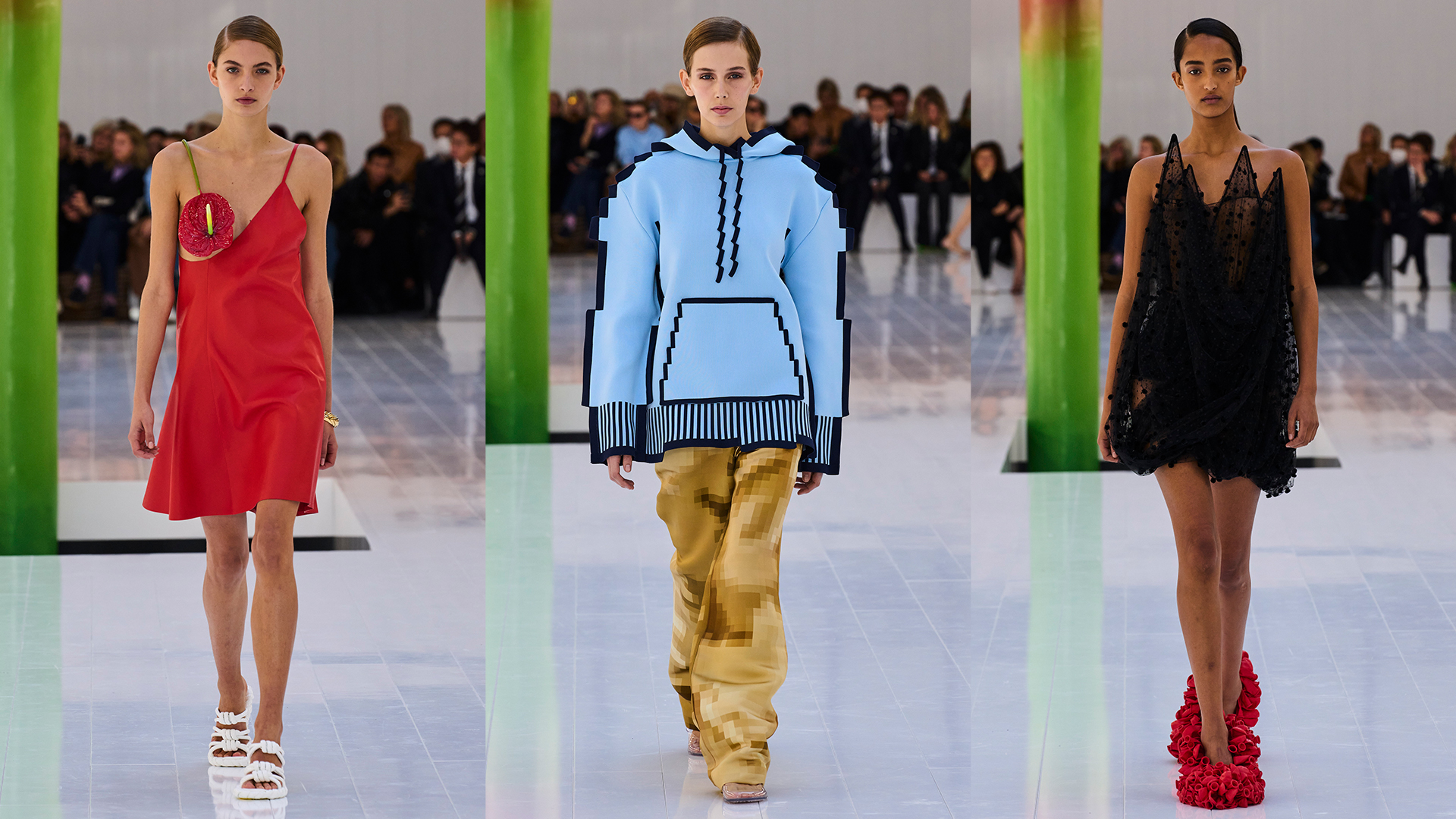A giant fibreglass red anthurium formed the centrepiece to Jonathan Anderson’s SS23 show for Loewe. The clinically-white space, lit by bright morning daylight, was a familiar one. It was here that he showed his game-changing SS22 collection last year, the one with all those harpooned jersey dresses and Duchampian lipstick-heeled stilettos. Ever since that seminal show, Jonathan has been leaning into the art of surrealism as an exploration of fashion’s — and therefore society’s — relationship with technology. He has carved out an interesting space in the industry: What can fashion for the digital age look like at a house that is all about handcraft?
For his latest chapter in his ongoing chronicles to answer that question, Jonathan looked to nature, the original Internet! He was drawn to anthuriums because he said they look artificial, almost like objects of design — and indeed, when placed on shoes or worn as bras, it was difficult to tell what was natural or synthetic. Flowers for spring? It may not be groundbreaking, but there were layers of depth to the idea. Something about it felt Huysmansian, a sort of subtle sign of decadence — artificial flowers that look real, real flowers that look fake — amidst an otherwise austere, perhaps even clinical, setting. He was also, he said, in search of “reduction and clarity” and taking it back to basics. The collection was intentionally flat — in the 2D sense — almost like bumper stickers placed onto the body, often in top-heavy, bulb-shaped silhouettes. It touched on a recurring theme this season that has been fascinating designers, that of “perverse banality”. Normal clothes, mundane even — clothes that have found their edge, to borrow from the pop-psychology term du jour.

Here, polo-tops were fluted into trapeze shapes with Op Art candy stripes, Barbour-esque field jackets (the most banal!) were abbreviated into flirty little peplum dresses, and zip-up cashmere cardies were stretched out by pringle-shaped breastplates. The geometric forms that opened the show — perpendicular-shaped panniers on bustier dresses — were a reminder of nature’s Pythagorean patterns. Repetition of the same looks iterated ideas over and over, the same clothes in different colours, almost like they were fonts that simply changed colour. A couple of pixelated sweats looked like digital stickers dragged onto the body, buffering in the style of Y2K-era MSN accounts. The collection touched on some of the themes of hyper-realism and technology that Jonathan introduced in his last menswear collection for Loewe, after which he asked some rhetorical questions to an audience of editors: “Are we falling into the screen? Are we becoming our phones? Is it to do with where we are in society?”
The ceramic balloons that appeared on slinky dresses and shoes in the show a year ago returned, only this time they were deflated and placed onto shoes like wilting petals. One gets the sense that Jonathan is pushing himself to overcome each of his last collections, working away at reducing and sharpening his vision to create something that cuts through the deafening noise of the post-pandemic fashion. He’s not afraid of referencing himself, even if it means it can lead to repetition. “I kind of liked this idea of something meditative, like this idea of like, we, there’s something when you see something, as the proportion goes up, and the proportion goes down,” Jonathan exonerated after the show. “It’s like a trickery, where you don’t know if it’s the look that you saw, or the same person or not; It’s more focused.” Ultimately, however, he is a designer concerned with the very backbone of fashion: silhouette. Not decoration, not surface-level embellishment, not nostalgia, but the very notion of the way materials can sit on — and transform — the body. “I feel like I’m starting to enjoy, actually, just enjoying the making of a silhouette,” he smiled. The feeling, from the perspective of the audience, was mutual. Fashion to entertain, but also to make you think.
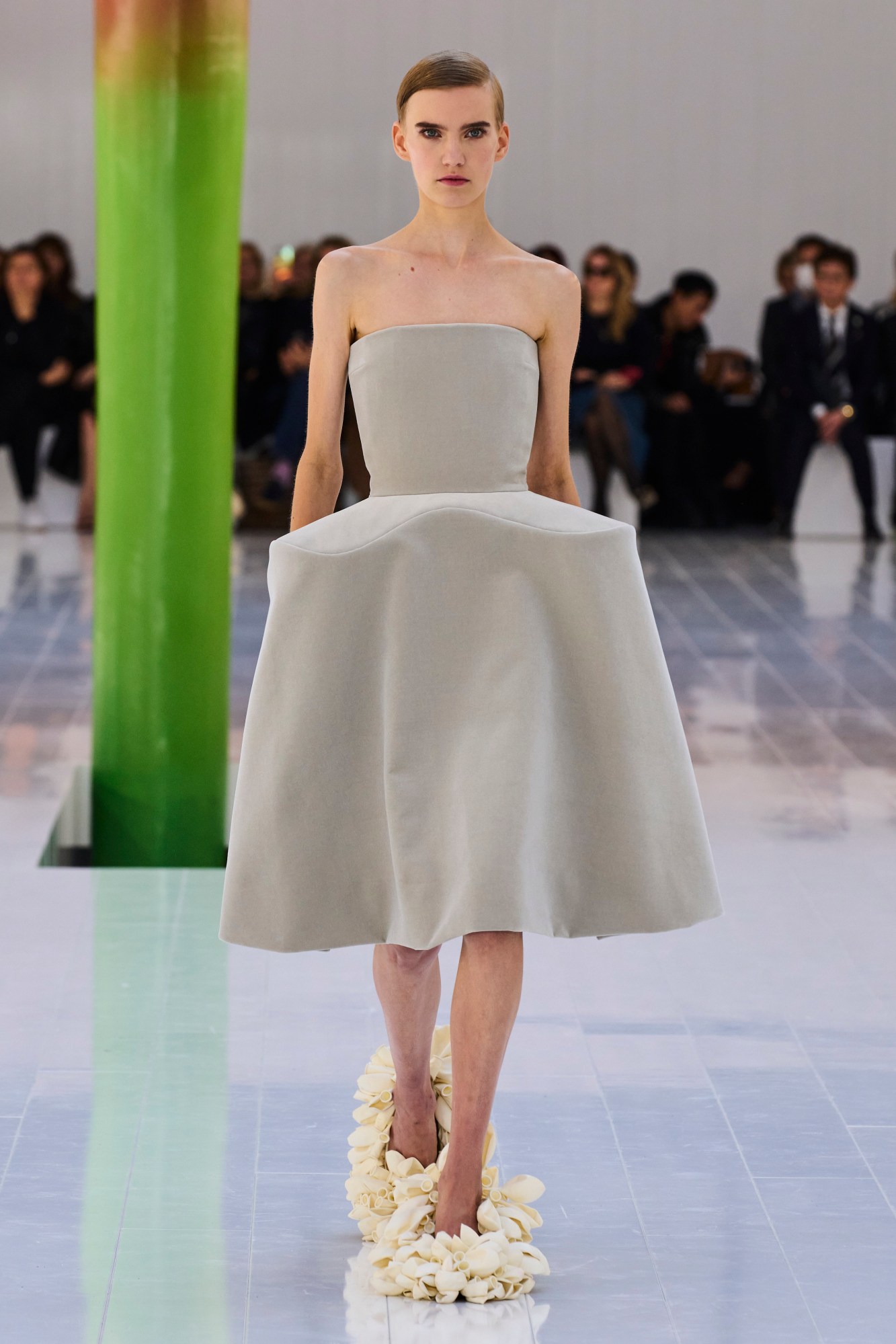
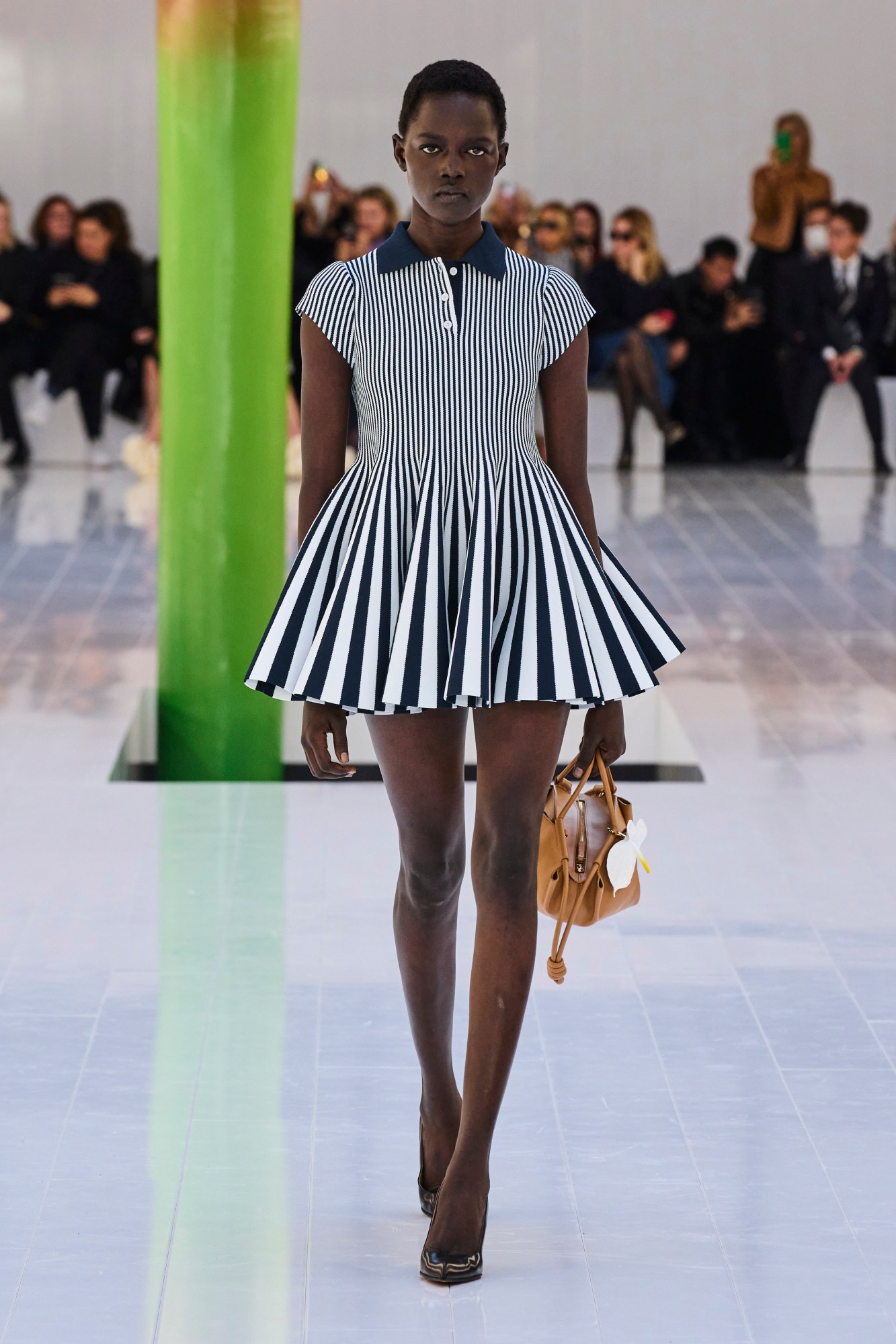
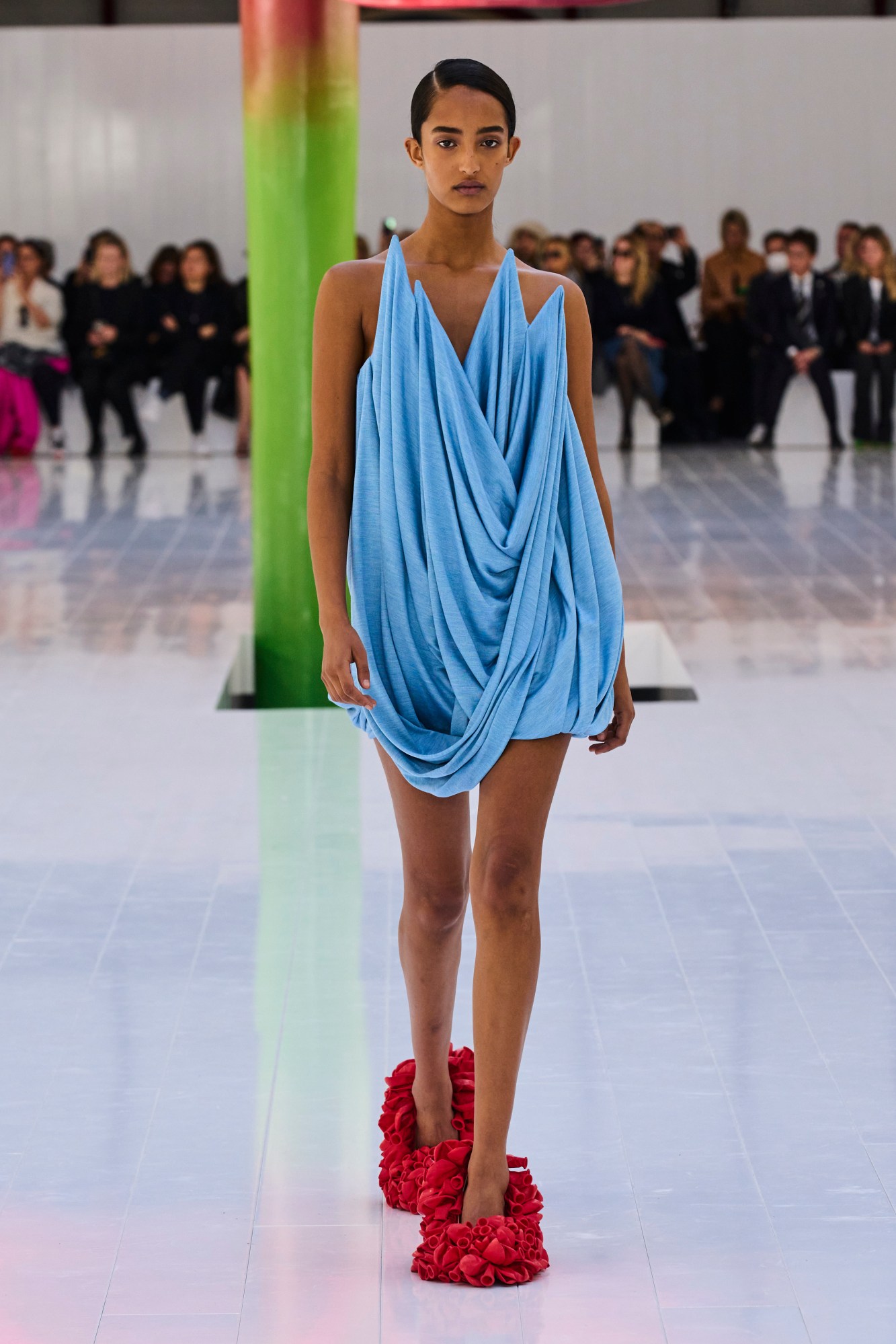

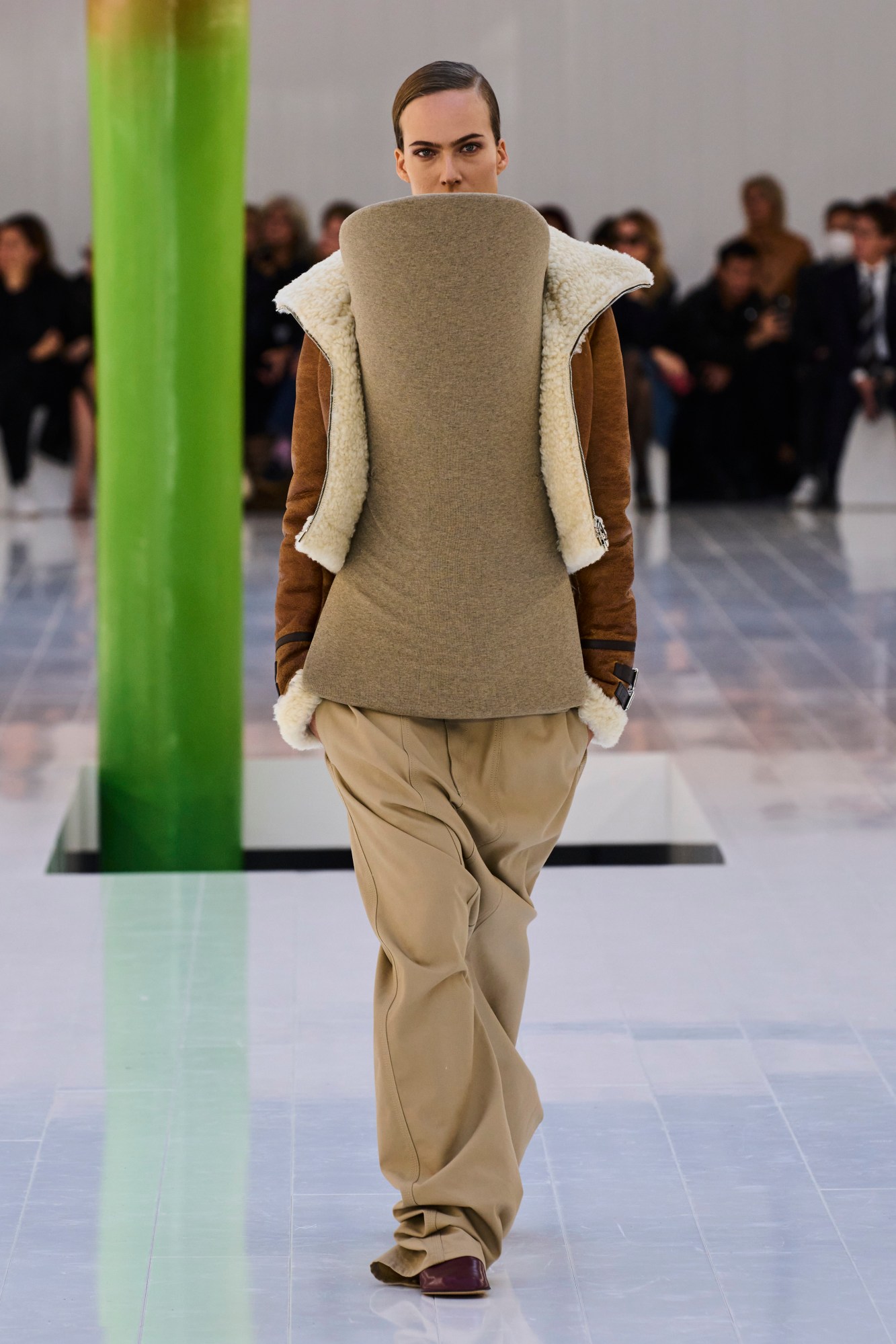
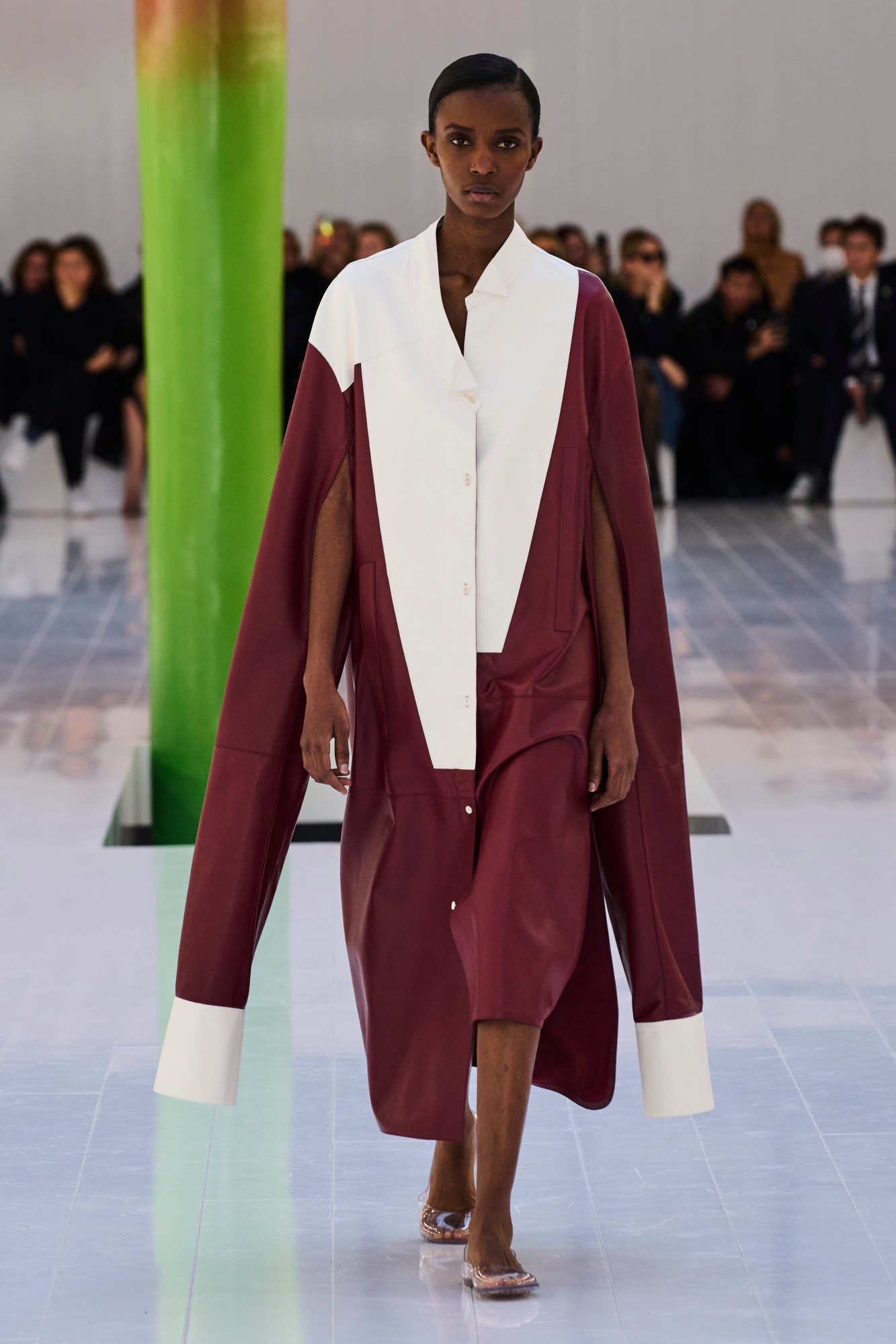
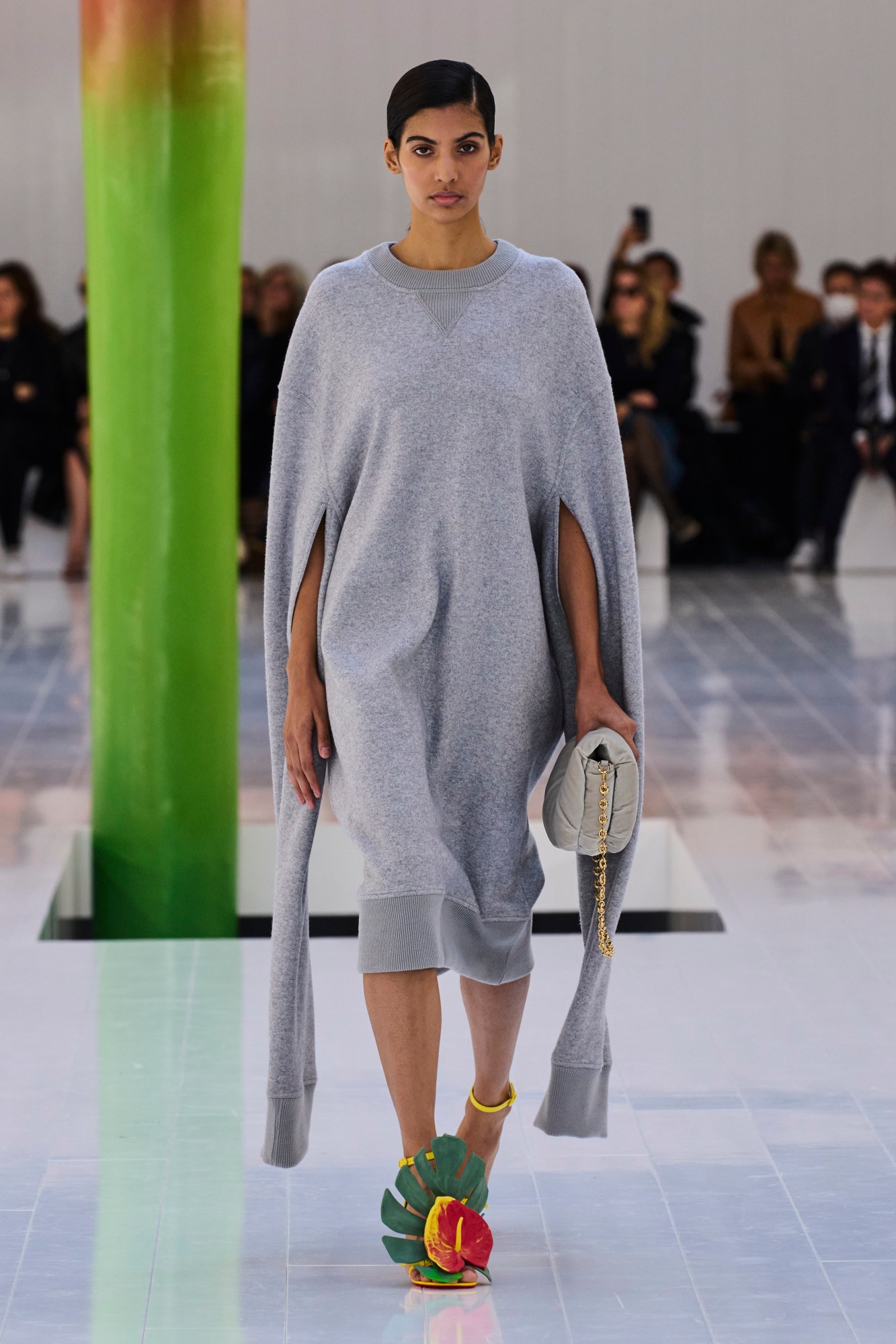
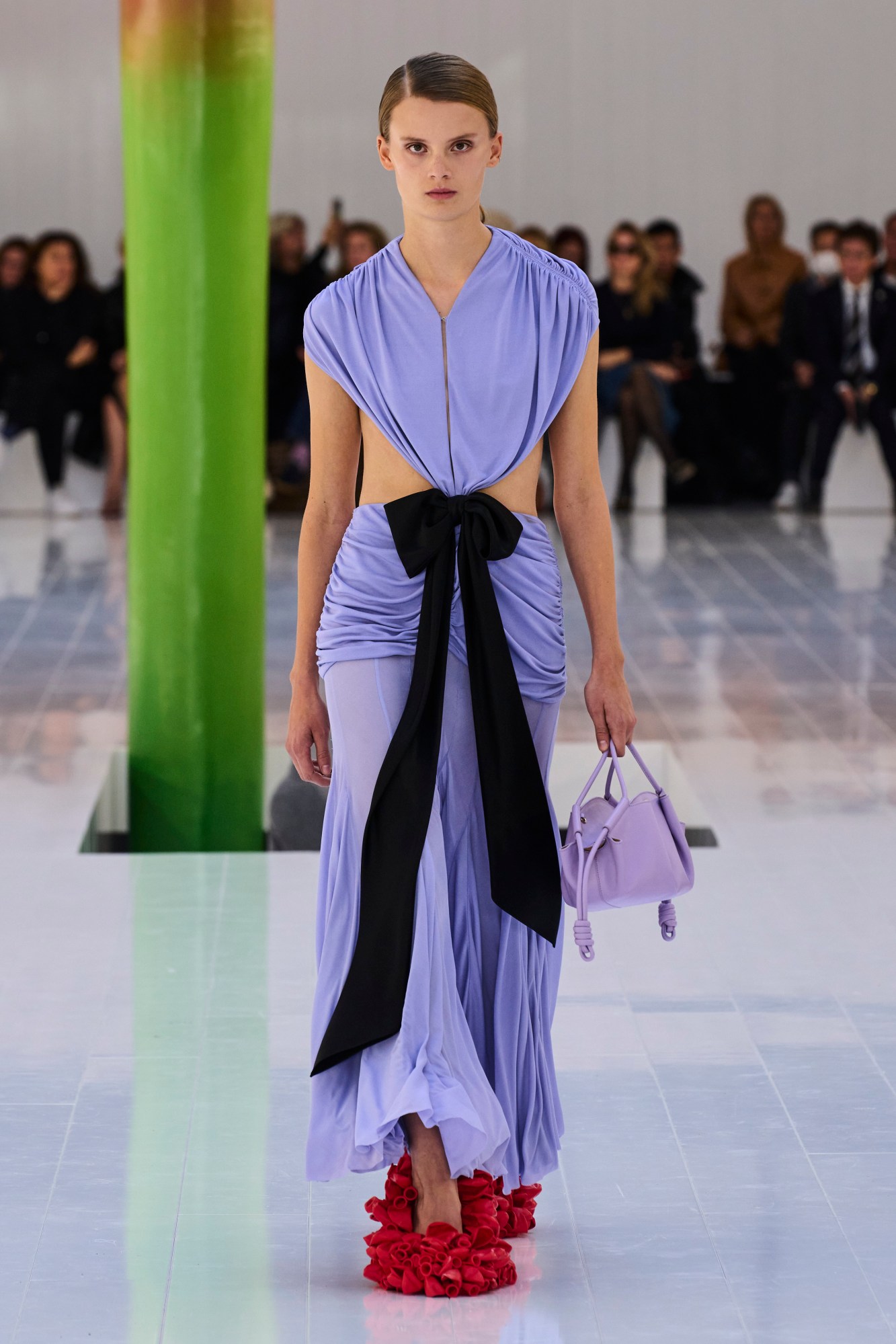
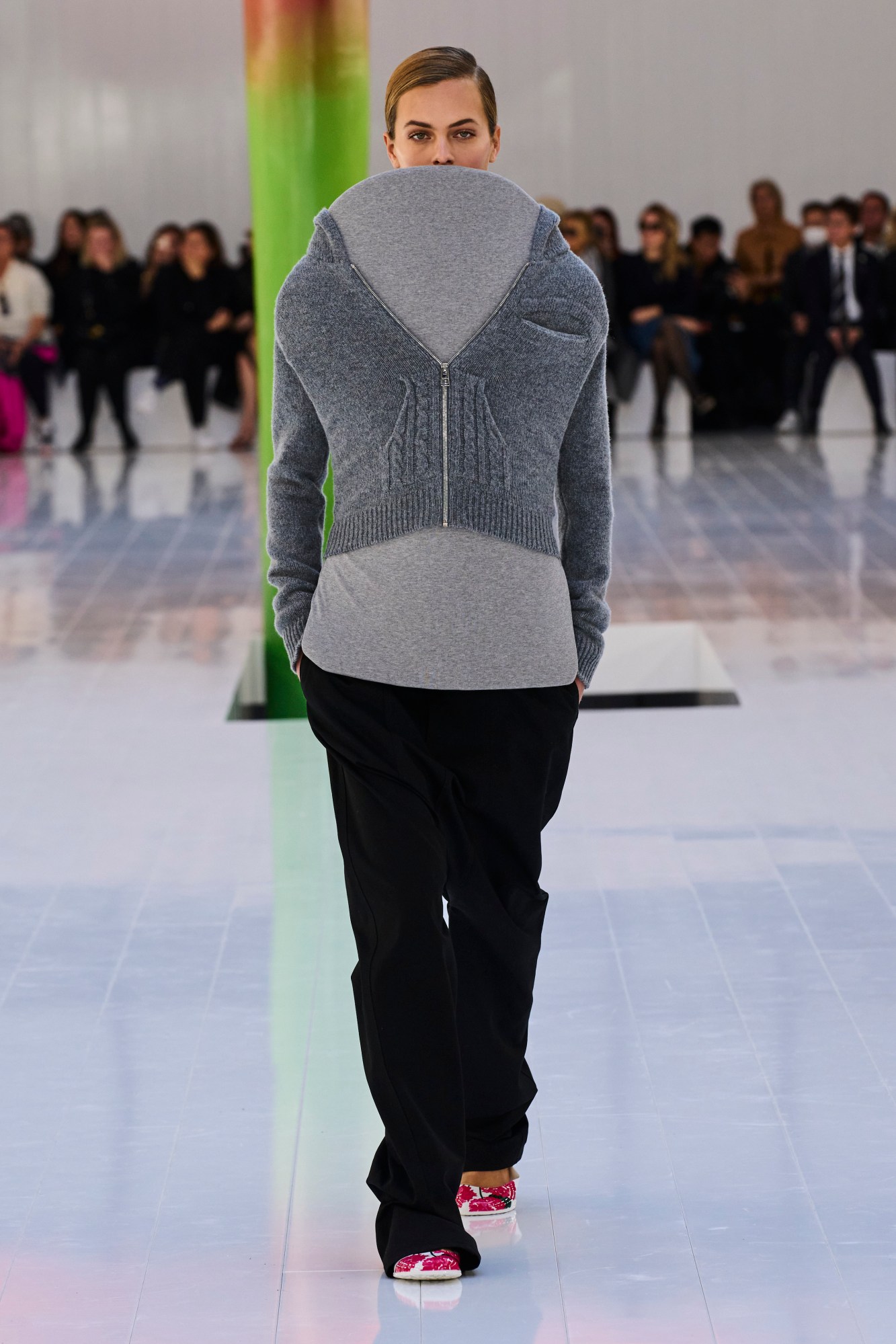
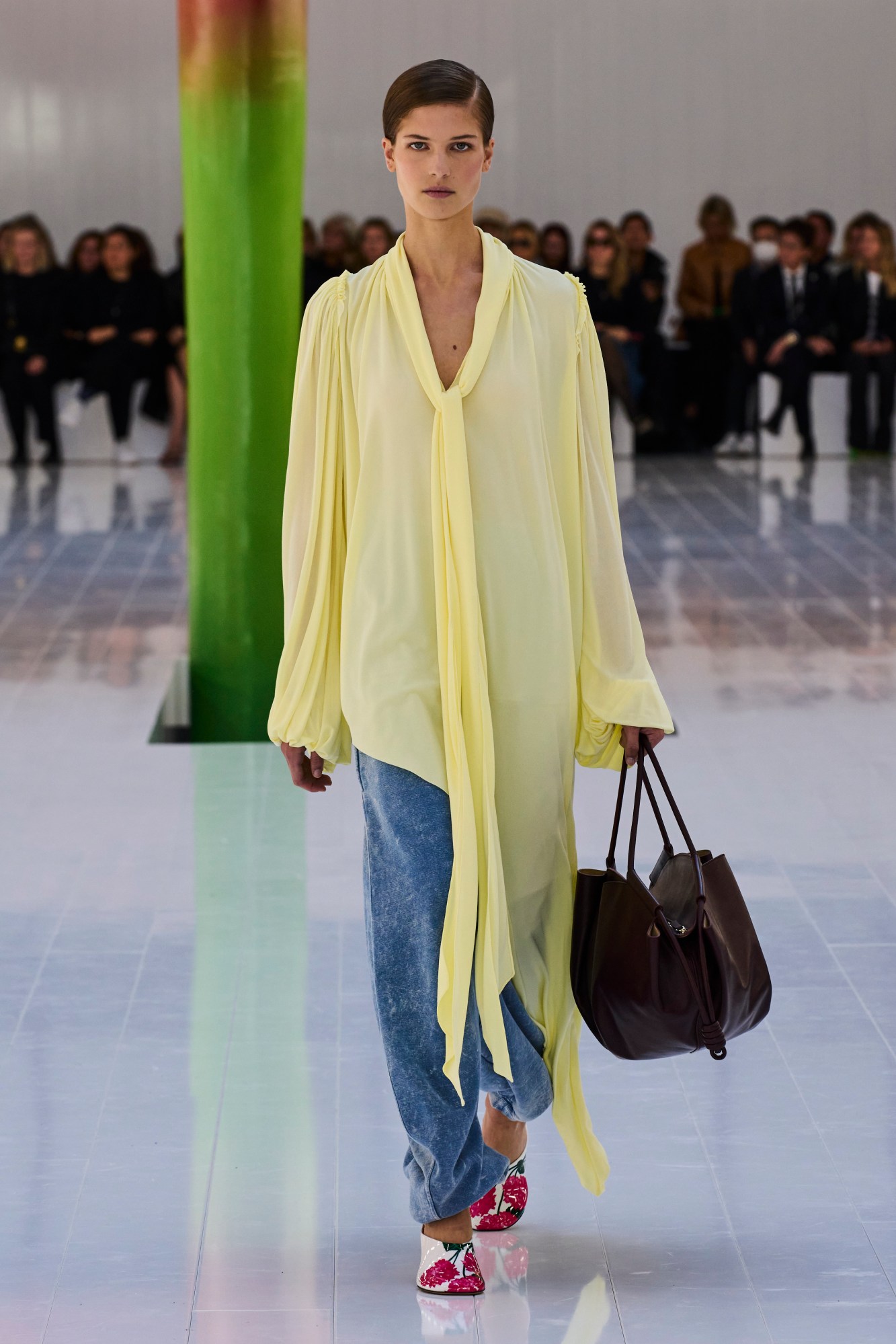
Credits
All images via Spotlight
